This work investigates the catalytic properties of turbostratic carbon supported Pd catalyst in hydrodechlorination of trichloroethylene (TCE HDC) in aqueous phase. 1.57 wt% Pd/C was thoroughly characterized by BET, TPHD, CO chemisorption, PXRD, STEM, XPS and used as the catalyst in removal of trichloroethylene from drinking water in batch and continuous-flow reactors. The studies showed that catalytic performance of Pd/C depended on the hydrophobicity and textural properties of carbon support, which influenced noble metal dispersion and increased catalyst tolerance against deactivation by chlorination. Palladium in the form of uniformly dispersed small (~3.5 nm) nanoparticles was found to be very active and stable in purification of water from TCE both in batch and continuous-flow operation.
1.
Introduction
This paper deals with periodic measures of the following reaction-diffusion lattice systems driven by superlinear noise defined on the integer set Zk :
along with initial conditions:
where i=(i1,i2,…,ik)∈Zk, λ(t),ν(t) are continuous functions, λ(t)>0, (fi)i∈Zk and (ˆσi,j)i∈Zk,j∈N are two sequences of continuously differentiable nonlinearities with arbitrary and superlinear growth rate from R×R→R, respectively, g=(gi)i∈Zk and h=(hi,j)i∈Zk,j∈N are two time-dependent random sequences, and δ=(δi,j)i∈Zk,j∈N is a sequence of real numbers. The sequence of independent two-sided real-valued Wiener processes (Wj)j∈N is defined on a complete filtered probability space (Ω,F,{Ft}t∈R,P). Furthermore, we assume that system (1.1) is a time periodic system; more precisely, there exists T>0 such that the time-dependent functions λ,ν,fi,g,h,σi,j(i∈Zk,j∈N) in (1.1) are all T-periodic in time.
Lattice systems are gradually becoming a large and evolving interdisciplinary research field, due to wide range of applications in physics, biology and engineering such as pattern recognition, propagation of nerve pulses, electric circuits, and so on, see [1,2,3,4,5,6] and the references therein for more details. The well-posedness and the dynamics of these equations have been studied by many authors, [7,8,9,10] for deterministic systems and [11,12,13,14,15,16,17,18,19] for stochastic systems where the existence of random attractors and probability measures have been examined. Especially, the authors research the limiting behavior of periodic measures of lattice systems in [15].
Nonlinear noise was proposed and studied for the first time in [19], the authors researches the long-term behavior of lattice systems driven by nonlinear noise in terms of random attractors and invariant measures. Before that, the research on noise was limited to additive noise and linear multiplicative noise, which can be transformed into a deterministic system. However, if the diffusion coefficients are nonlinear, then one cannot convert the stochastic system into a pathwise deterministic one, and thereby this problem cannot be studied under the frameworks of deterministic systems aforementioned. As an extension of [19], a class of reaction-diffusion lattice systems driven by superlinear noise, where the noise has a superlinear growth order q∈[2,p), is studied by taking advantage of the dissipativeness of the nonlinear drift function fi in (1.1) to control the superlinear noise in [20].
In the paper, we will study the existence of periodic measures of reaction-diffusion lattice systems drive by superlinear noise. One of the main tasks in our analysis is to solve the superlinear noise terms. We remark that if the noise grows linearly, then the estimates we need can be obtained by applying the standard methods available in the literature. We adopt the ideas that take advantage of the nonlinear drift terms' the polynomical growth rate p (p≥2) to control the noise polynomical rate q∈[2,p). Furthermore, notice that l2 is an infinite-dimensional phase space and problem (1.1)–(1.2) is defined on the unbounded set Zk. The unboundedness of Zk as well as the infinite-dimensionalness of l2 introduce a major difficulty, because of the non-compactness of usual Sobolev embeddings on unbounded domains. We will employ the dissipativeness of the drift function in (1.1) as well as a cutoff technique to prove that the tails of solutions are uniformly small in L2(Ω,l2). Based upon this fact we obtain the tightness of distribution laws of solutions, and then the existence of periodic measures.
In the next section, we discuss the well-poseness of solutions of (1.1) and (1.2). Section 3 is devoted to the uniform estimates of solutions including the uniform estimates on the tails of solutions. In Section 4, we show the existence of periodic measures of (1.1) and (1.2).
2.
Global well-posedness of reaction-diffusion lattice systems with superlinear noise
In this section, we prove the existence and uniqueness of solutions to system (1.1) and (1.2). We first discuss the assumptions on the nonlinear drift and diffusion terms in (1.1).
We begin with the following Banach space:
The norm and inner product of l2 are denoted by (⋅,⋅) and ‖⋅‖, respectively. For the nonlinear drift function fi∈C1(R×R,R) in the equation we assume that for all s∈R and i∈Zk,
where p>2 and γ1>0 are constants. For the sequence of continuously differentiable diffusion functions ˆσ=(ˆσi,j)i∈Zk,j∈N, we assume, for all s∈R and j∈N,
where q∈[2,p) is a constant. For processes g(t)=(gi(t))i∈Zk and h(t)=(hi,j)i∈Zk,j∈N are both continuous in t∈R, which implies that for all t∈R,
In addition, we assume δ=(δi,j)i∈Zk,j∈N satisfies
We will investigate the periodic measures of system (1.1)–(1.2) for which we assume that all given time-dependent functions are T-periodic in t∈R for some T>0; that is, for all t∈R,i∈Zk and k∈N.
If m:R→R is a continuous T-periodic function, we denote
We want to reformulate problem (1.1)–(1.2) as an abstract one in l2. Given 1≤j≤k,u=(ui)i∈Zk∈l2 and i=(i1,i2,…,ik)∈Zk. Let us define the operators from l2 to l2 by
and
For all 1≤j≤k,u=(ui)i∈Zk∈l2 and v=(vi)i∈Zk∈l2 we see
Again, define the operators f,σj:R×l2→l2 by
It follows from (2.3) that there exists θ∈(0,1) such that for p>2 and u,v∈l2,
This together with f(t,0)∈l2 by (2.2) yields f(t,u)∈l2 for all u∈l2, and thereby f:R×l2→l2 is well-defined. In addition, we deduce from (2.9) that f:R×l2→l2 is a locally Lipschitz continuous function, that is, for every n∈N, we can find a constant c1(n)>0 satisfying, for all u,v∈l2 with ‖u‖≤n and ‖v‖≤n,
For q∈[2,p) and u∈l2, one can deduce from(2.4), (2.7) and Young's inequality that for all ϖ>0,
where γ1 is the same number as in (2.1). From (2.11) and l2⊆lp for p>2, we find that σj(t,u)∈l2 for all u∈l2. Then σj:R×l2→l2 is also well-defined. In addition, it yields from (2.5) and (2.7) that there exists η∈(0,1) such that for q∈[2,p) and u,v∈l2,
This implies that σj:R×l2→l2 is also locally Lipschitz continuous, more precisely, for every n∈N, one can find a constant c2(n)>0 satisfying, for all u,v∈l2 with ‖u‖≤n and ‖v‖≤n,
and
By above notations one is able to rewrite (1.1)–(1.2) as the following system in l2 for t>0 :
with initial condition:
in the present article, the solutions of system (2.15)–(2.16) are interpreted in the following sense.
Definition 2.1. Suppose u0∈L2(Ω,l2) is F0-measurable, a continuous l2-valued Ft-adapted stochastic process u is called a solution of equations (2.15) and (2.16) if u∈L2(Ω,C([0,T],l2))∩Lp(Ω,Lp(0,T;lp)) for all T>0, and the following equation holds for all t≥0 and almost all ω∈Ω:
Similar to Ref.[20], we can get (2.15) and (2.16) exist global solutions in the sense of Definition 2.1.
3.
Uniform estimates
In this section, we derive the uniform estimates of solutions of (2.15)–(2.16). These estimates will be used to establish the tightness of a set of probability distributions of u in l2.
We assume that
Lemma 3.1. Let (2.1)–(2.7) and (3.1) hold. Then the solutions u(t,0,u0) of system (2.15) and (2.16) with initial data u0 at time 0 satisfy, for all t≥0,
where L1>0 is a positive constant which depends on α_,p,q,γ,cδ,t, but indepentent of u0.
Proof. Applying Ito's formula to (2.15) we get
This implies
For the second term on the left-hand side of (3.3), we have
For the first term on the right-hand side of (3.3), we get from (2.1) that
For the second term on the right-hand side of (3.3), we have
For the last term on the right-hand side of (3.3), we infer from (2.11) with ω=2 that
By (3.3)–(3.7) we get
implies that
where C1=p−qp(pγ12q)−qp−q(4cδ)pp−q‖φ1‖2pp−q2pp−q+4cδ‖φ2‖2+2‖ϕ1‖1. Multiplying (3.9) by eα_t and integrating over (0,t) to obtain
where C2=2∑∞j=1‖¯hj‖2+1λ_‖¯g‖2+C1. This completes the proof.
Lemma 3.2. Let (2.1)–(2.7), and (3.1) be satisfied. Then for compact subset K of l2, one can find a number N0=N0(K)∈N such that the solutions u(t,0,u0) of (2.15) and (2.16) satisfy, for all n≥N0 and t≥0,
where u0∈K and ‖i‖:=maxi≤j≤k|ij|.
Proof. Define a smooth function ξ:R→[0,1] such that
Denote by
Similar notations will also be used for other terms. It follows from (2.15) that
By Ito's formula and (3.14) we have
This yields
For the second term on the left-hand side of (3.16), we have
We first deal with the first term on the right-hand side of (3.17). Notice that
By the definition of function ξ, there exists a constant C3>0 such that |ξ′(s)|≤C3 for all s∈R. Then the first term on the right-hand side of (3.18) is bounded by
By the definition of |Bju|i, the last term on the right-hand side of (3.18) is bounded by
Then we find from (3.18) to (3.20) that the first term on the right-hand side of (3.17) is bounded by
In addition, we find that the last term on the right-hand side of (3.17) can be bounded by
By (3.21), (3.22) and (3.17), we infer that the second term on the left-hand side of (3.16) satisfied
where C4=4kC3(2+C3). For the first term on the right-hand side of (3.16), we find from (2.1) that
For the second term on the right-hand side of (3.16), we infer from Young's inequality that
For the last term on the right-hand side (3.16), we infer from (2.4) and Young's inequality that
Substituting (3.23)–(3.26) into (3.16) we get
where C_5 = 2+\frac{1}{\underline{\lambda}}+\frac{p-q}{p}(\frac{p\gamma_1}{q})^{-\frac{q}{p-q}}(4c_\delta)^{\frac{p}{p-q}}+4c_\delta . One can multiply (3.27) by e^{\underline{\alpha}t} and integrate over (0, t) in order to obtain
Since \mathcal K is a compact subset of l^2 we infer from (3.1) that
By Lemma 3.1, we find that for all u_0\in\mathcal K and t\ge 0 , as n\to\infty ,
where L_1 is the same number of (3.1) and C_{6} > 0 is a constant depending only on u_0 .By \varphi_1\in l^{\frac{2p}{p-q}}, \varphi_2\in l^2, \phi_1\in l^1 , (2.6) and (3.1), we infer that
It follows from (3.28) to (3.31) that as n\to\infty ,
Then for every \varepsilon > 0 we can find a number N_0 = N_0(\mathcal K)\in\mathbb N satisfying, for all n\ge N_0 and t\ge 0 ,
uniformly for u_0\in\mathcal K and t\ge 0 . This concludes the proof.
4.
Existence of periodic measures
In the sequel, we use \mathcal L(u(t, 0, u_0)) to denote the probability distribution of the solution u(t, 0, u_0) of (2.15)–(2.16) which has initial condition u_0 at initial time 0 . Then we have the following tightness of a family of distributions of solutions.
Lemma 4.1. Suppose (2.1)–(2.7) and (3.1) hold. Then the family \{\mathcal L(u(t, 0, u_0)):t\ge 0\} of the distributions ofthe solutions of (2.15)–(2.16) is tight on l^2 .
Proof. For simplicity, we will write the solution u (t, 0, u_0) as u(t) from now on. It follows from Lemma 3.1 that there exists a constant c_1 > 0 such that
By Chebyshev's inequality, we get from (4.1) that for all t\geq0 ,
Hence for every \epsilon > 0 , there exists R_1 = R_1(\epsilon) > 0 such that for all t\geq0 ,
By Lemma 3.2, we infer that for each \epsilon > 0 and m\in \mathbb{N} , there exists an integer n_m = n_m(\epsilon, m) such that for all t\geq 0 ,
and hence for all t\geq 0 and m\in \mathbb{N} ,
It follows from (4.3) for all t\geq 0 ,
which shows that for all t\geq 0 ,
Given \epsilon > 0 , set
and
By (4.2) and (4.4) we get, for all t\geq0 ,
Now, we show the precompactness of \left\{ {v:v \in Y_\epsilon } \right\} in l^2 . Given \kappa > 0 , choose an integer m_0 = m_0 \left(\kappa \right) \in \mathbb{N} such that 2^{m_0 } > \frac{8}{{\kappa ^2 }} . Then by (4.6) we obtain
On the other hand, by (4.5) we see that the set \left\{ {(v_i)_{|i|\leq m_0}:v \in Y_\epsilon } \right\} is bounded in the finite-dimensional space R^{2m_0+1} and hence precompact. Consequently, \left\{ {v:v \in Y_\epsilon } \right\} has a finite open cover of balls with radius \frac{\kappa }{2} , which along with (4.9) implies that the set \left\{ {v:v \in Y_\epsilon } \right\} has a finite open cover of balls with radius \kappa in l^2 . Since \kappa > 0 is arbitrary, we find that the set \left\{ {v: v\in Y_\epsilon } \right\} is precompact in l^2 . This completes the proof.
If \phi:l^2\to\mathbb R is a bounded Borel function, then for 0\le r\le t and u_0\in l^2 , we set
and
where \Gamma\in\mathcal B(l^2) and 1_\Gamma is the characteristic function of \Gamma . The operators p_{s, t} with 0\le s\le t are called the transition operators for the solutions of (2.15)–(2.16). Recall that a probability measure \nu on l^2 is periodic for (2.15)–(2.16) if
Lemma 4.2. [21]Let \varrho(\psi, \omega) be a scalar bounded measurable randomfunction of \psi , independent of \mathcal F_s . Let \varsigma be an \mathcal F_s -measurable random variable. Then
The transition operators \{p_{r, t}\}_{0\le r\le t} have the following properties.
Lemma 4.3. Assume that (2.1)–(2.7) and (3.1) hold. Then:
(i) \{p_{r, t}\}_{0\le r\le t} is Feller; that is, for every bounded andcontinuous \phi: l^2\to\mathbb R , the function p_{r, t}\phi: l^2\to\mathbb R is also bounded and continuous for all 0\le r\le t.
(ii) The family \{p_{r, t}\}_{0\le r\le t} is T-periodic; that is, for all 0\le r\le t ,
(iii) \{u(t, 0, u_0)\}_{t\ge 0} is a l^2 -valued Markov process.
Finally, we present our main result on the existence of periodic measures for problem (2.15)–(2.16).
Theorem 4.4. Assume that (2.1)–(2.7) and (3.1) hold. Then problem (2.15)–(2.16) has a periodic measure on l^2 .
Proof. We apply Krylov-Bogolyubov's method to prove the existence of periodic measures of (2.15)–(2.16), define a probability measure \mu_n by
By Lemma 4.1 we see the sequence \{\mu_n\}^\infty_{n = 1} is tight on l^2 , and hence there exists a probability measure \mu on l^2 such that, up to a subsequence,
By (4.10)–(4.11) and Lemma 4.3, we infer that for every t\ge0 and every bounded and continuous function \phi:l^2\to\mathbb R,
which shows that \mu is a periodic measure of (2.15)–(2.16), as desired.
Conflict of interest
The author declares there is no conflict of interest.











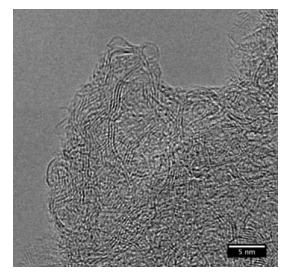
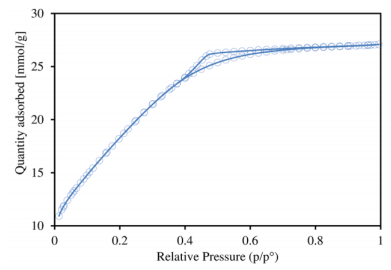
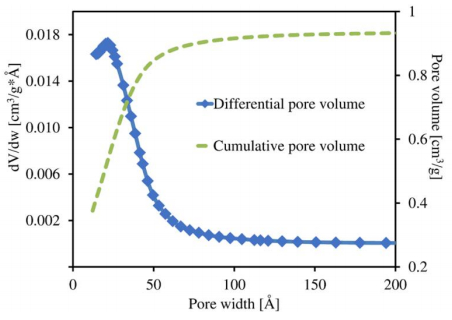
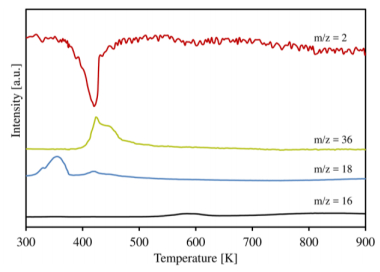

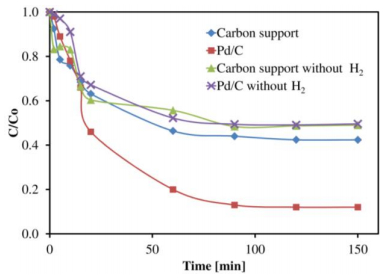
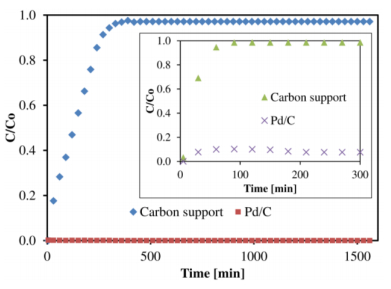
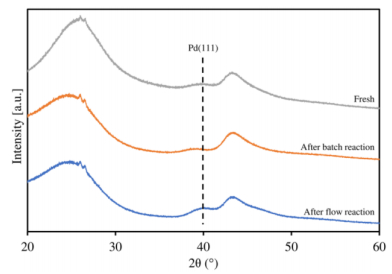
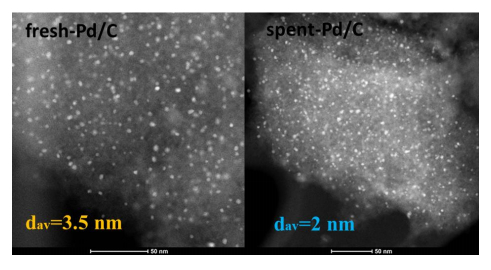
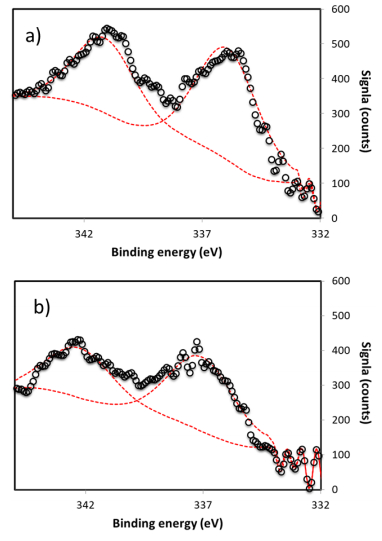


 DownLoad:
DownLoad: